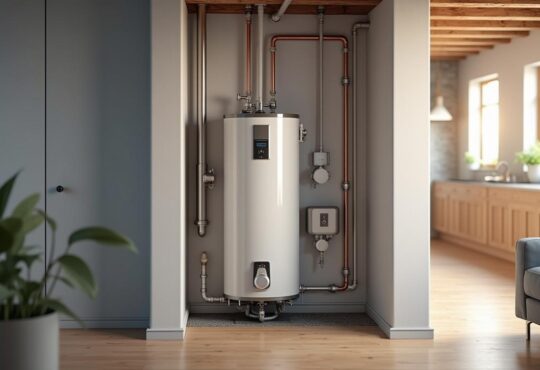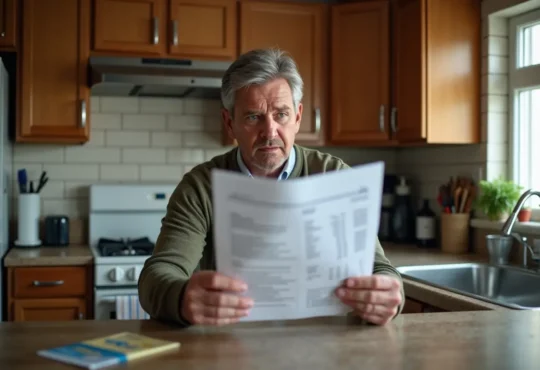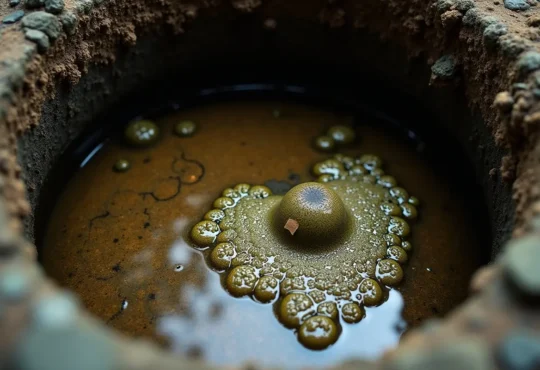
How Much Does a Plumber Charge Per Hour?
Nobody wants to pay for plumbing work, but for most homeowners, it’s inevitable. Hence, how much does a plumber charge per hour is a common question. The short answer is, it depends. The key factors are scope of the job and your location, some cities cost more than others.
Plumbing is an essential aspect of any home, and over time, pipes need some TLC, toilets need fixing, and water heaters need replacing.
When these things happen, it’s time to call a plumbing professional. Before you do, you need to have a good idea of the potential costs involved, specifically labor costs.
In other words, you must find answers to the age-old question, how much does a plumber charge per hour? That’s exactly what we’ll cover in this guide, providing you with average rates based on location, experience, and the job at hand.
Contents
What Determines a Plumber’s Hourly Rate?
Contrary to popular belief, not all plumbing jobs are insanely expensive. If you recently hired a plumber for a simple task and paid thousands of dollars, you’ve probably been ripped off.
In this case, it’s likely that you’ll be hesitant to hire a plumber again. It might sound more appealing to DIY your next project, but unless it’s a simple one, this isn’t recommended.
The easiest way to avoid getting ripped off in the future is to do your research. Next time, get quotes from multiple plumbers to compare prices and expertise. This allows you to make a more informed decision, and hopefully, avoid paying thousands for a simple job.
Of course, the final cost is dependent on a few things, including:
- Difficulty of the job
- Homeowner’s location
- Required tools and materials
- Travel distance to job site
- Regular vs emergency hours
Average Pricing Guide for Plumbers
Based on the factors listed above, you could be paying anywhere from $45 to $150 per hour to hire a plumber. The average hourly rate is about $75, but this doesn’t even include the cost of materials and other fees.
For some people, paying an hourly rate of $75 might seem ridiculous. The cheaper option is to hire a simple handyman or apprentice plumber. In this case, the hourly rate is much lower at $25 to $45.
If you do hire a handyman or apprentice, just be aware that this individual typically doesn’t have the same training and experience.
What About a Flat Fee?
Some plumbing professionals choose to charge a flat fee rather than charge by the hour. This is only common for small repairs, like fixing leaky faucets or running toilets. In this case, you can expect to pay a total of $200 to $250.
The flat fee for a larger, more challenging job will cost much more. Replacing a new water heater, for example, can have labor costs anywhere from $500 to $800.
Other Costs to Be Aware Of
In addition to the hourly rate, there are a few more things you’ll have to pay for. Some plumbers tack on a minimum service call-out fee in addition to the hourly rate. This fee can range anywhere from $50 to $150.
Travel and trip fees can also increase the total bill. Not all plumbers charge for this, but if they do, you can expect to pay $1 to $2 per mile for the travel aspect of the bill.
Lastly, some pros bill customers for a minimum number of hours. Even if the job takes only 10 minutes to fix, you’ll be paying for more than 10 minutes of work. In most cases, the minimum number of billed hours is 2, but this can vary.
Weekend/Emergency Plumbing Costs
Just like everyone else, plumbers like to enjoy their weekends. Unfortunately, some plumbing tasks need to be addressed right away, even if it’s a Sunday.
While most plumbers are willing to come out on the weekends or evenings, you can expect to pay a higher rate. Some pros charge double or even triple for off-hours and after-rate. This adds up to $125-$170 per hour.
Is It Possible to DIY Plumbing Tasks?
Unless you have some handyman – or handywoman! – experience, it’s not a great idea to tinker around with your home’s plumbing. There are some exceptions, though, and performing simple tasks on your own can save you some serious cash.
There are 2 easy fixes that are easy to do on your own:
- Fixing a Leaky Faucet
- Fixing a Running Toilet
Fixing a Leaky Faucet
Fixing a leaky faucet is a fairly simple task that most homeowners can do on their own. You can save a few hundred bucks by doing it on your own without professional help.
Want to know how to fix a leaky faucet on your own? Follow these steps:
- Shut off the water supply: Before you can begin fixing the leak, the first step is to shut off the water. You can find the water supply valve underneath the sink, usually tucked away within cabinetry. Turn the valve to the off position and you’re ready for some DIY-ing.
- Remove the faucet handle: Next, you’ll have to remove the faucet handle. The removal steps depend on the type of faucet you’re dealing with. Some require an Allen key while others require a simple screwdriver.
- Remove the faucet cartridge: Most faucet handles are designed with a cartridge that regulates the flow of hot and cold water. This small component can be loosened with a wrench and removed by hand.
- Install a new cartridge: If you’ve removed the cartridge and identified it as the source of the leak, you can discard of it and replace it with a new one. These are easy to find at any home improvement store, including Home Depot and Lowes.
- Reattach the faucet handle: Once the new cartridge is in place, reattach the faucet handle using an Allen key or screwdriver.
Fixing a Running Toilet
There are a few reasons for a constantly-running toilet, like a leaky flapper or a bad fill valve. The first step is to identify the problem, and you can proceed from there. In most cases, it’s a flapper issue.
Here’s a quick breakdown of how to replace a broken toilet flapper.
- Remove the old flapper: After removing the old flapper, give it a quick wash and dry. Head to your local hardware store with the flapper in hand, and purchase a new flapper that’s compatible with your toilet. If you want a full-in-one kit, there are plenty of flapper kits on the market for different toilet models.
- Turn off the toilet’s water supply: Once back home with your brand new flapper kit, head to the bathroom and turn off the toilet’s water supply by turning the valve clockwise.
- Flush the toilet: To remove any remaining water in the tank, flush the toilet. While doing this, hold the flapper valve open to allow the water to drain from the tank.
- Follow the included instructions: Your flapper kit will come with a complete list of instructions. Simply follow these, and you’re good to go!
Big Costs of Big Jobs
It’s obvious that there are bigger costs involved with bigger jobs. Large home appliances aren’t cheap to install, like dishwashers, washing machines, water heaters, and refrigerators.
Then there are even bigger costs, like shower installs, bathtub replacements, and main sewer installations. A standard shower install or bathtub replacement will set you back anywhere from $1,000 to $5,000, whereas a main sewer installation costs upwards of $3,000.
The Most Expensive Plumbing Job in History
If you’ve learned anything so far, is that plumbing costs are across the board. Luckily, you won’t have to worry about paying anywhere close to the most expensive plumbing job in history.
Back in 2014, a group of military divers were forced to become professional plumbers for 10 consecutive days. Facing the frigid Arctic environment of Halifax, this job wasn’t easy, particularly because it involved arduous drilling through ice walls more than 1 meter thick.
The total cost of fixing the failed plumbing system was about $85,000. You can rest easy knowing that your next home’s plumbing job won’t cost anywhere near this, especially if you choose to DIY!





 Hi I'm Joe.
Hi I'm Joe. 